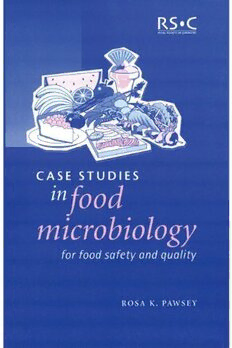
Case Studies in Food Microbiology for Food Safety and Quality PDF
494 Pages·2002·30.578 MB·English
Most books are stored in the elastic cloud where traffic is expensive. For this reason, we have a limit on daily download.
Preview Case Studies in Food Microbiology for Food Safety and Quality
Description:
This unique book covers the key issues relating to the control and management of the most commonly occurring food borne bacteria which compromise the safety and quality of food. The 21 case studies, drawn from a wide range of sources, present real life situations in which the management of food borne pathogens failed or was at risk of failure. Each chapter contains a case study which is supported by relevant background information (such as diagrams, tables of data, etc), study questions and a subsequent feedback commentary, all of which encourage the reader to apply their knowledge. With reference to specific organisms such as E. coli, Salmonella, Listeria monocytogenes and so on, the chapters move the reader progressively from strategies for control of food borne organisms, techniques for their control, appreciating risk, through sampling criteria and acceptance, to managing risk. With the provision of real-life problems to explore, along with the opportunity to propose and justify approaches to managing food safety, this book will be welcomed as a new approach to learning not only by students and their teachers, but also by food professionals in policy-making and enforcement and the many within the food industry who are involved with the management of food safety.
See more
The list of books you might like
Most books are stored in the elastic cloud where traffic is expensive. For this reason, we have a limit on daily download.
